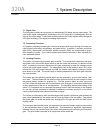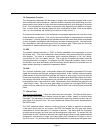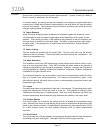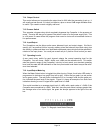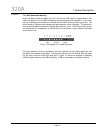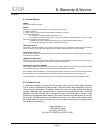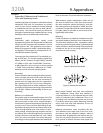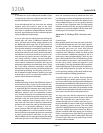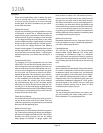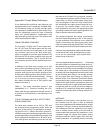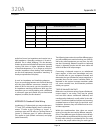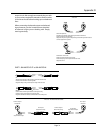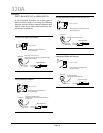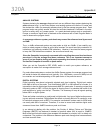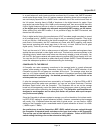
320A
Compellor
Page 28
There are basically three ways to attack the prob -
lem of a ground loop. First is to eliminate it from
its source, and the second is to re-route it through
another path. The third is to balance out your unbal -
anced audio interfaces.
Identify the Sources
A good way to identify grounding problems is to use
a multimeter to check the ac voltage between the
chassis of your various gear when no audio cables are
hooked up and all gear is plugged in and switched
on. Just start touching the two probes to the metal
chassis of dierent pieces of gear. Ideally, you should
always see zero volts. Warning! You may see as much
as the whole line voltage between two dierent
chassis! It does happen. This voltage between chassis
.smelborp pool dnuorg ruoy rof elbisnopser eb lliw
If you nd there is more than about 1 volt between
equipment grounds, you should start looking for a
remedy.
Commonize the Power
Try plugging all of your equipment into the same
outlet strip. Get one that has enough outlets in one
strip or string more than one together. Of course, you
need to make sure you don’t overload the one ac cir -
cuit your strip is plugged into. If the load is too great
for one circuit, use a second or third circuit that is
tapped o the same 120 volt phase in your distribu -
tion panel. That means all outlets should be on odd
or even numbered circuit breakers. That’s because,
as you go down the column, the circuit breakers
tap into alternating legs of your incoming electric
power. Be sure you’re always on the same leg. You
can tell you’re on the same leg by measuring the ac
voltage between the hot slots of the dierent outlets
you’ve chosen. It should be very low or zero. That will
remedy 50 percent of the cases.
Check the Cord Polarity
For products that have 2-wire power cords, try revers -
ing one of the power cords in the socket. That may
reduce the ground current generated by the internal
electronics of the oending gear.
Redirect Ground Loops
Sometimes it just comes down to brute force ground -
ing. That means providing such heavy, low resistance,
ground current paths that little current is left to ow
through your audio grounds. You can try adding
heavy gauge, for example 12 gauge, copper wire
from chassis to chassis. You will need to locate a
metal screw that solidly binds to the metal chassis of
the gear. You may even need to drill a hole through
the chassis and install a screw yourself. Equipment in
rack shelves can have their chassis grounded to the
metal rack frame by a heavy wire and the frame itself
can act as a brute force ground. You just have to try
everything you can think of. Usually a combination of
all these methods will be needed to completely clean
up a badly humming audio system.
Balance Out the Audio
Remember, balanced lines are inherently hum free.
If you can balance out your unbalanced equipment,
you will be able to stop the hum.
Pseudo Balancing
You will nd in Appendix D an interconnecting
method called Pseudo Balanced. This works when
connecting an unbalanced output to a balanced
input. This breaks up the ground loop by requiring
the shield to be grounded only at one end. For best
results always ground the shield only at the receiving
end.
Level Interface Units
Aphex manufactures the Model 124A Level Interface
box which is designed to electronically convert two
unbalanced inputs and outputs into two balanced
inputs and outputs, and at the same time translate
the -10dBV IHF unbalanced levels to the pro +4dBu
balanced levels. This cost eectively gives your non-
professional unbalanced equipment a fully profes -
.raeg oidua orp tseb s’dlrow eht ot lauqe O/I lanois
Seriously consider putting one of these on each
unbalanced piece of gear you use.
Avoid Transformers
The use of balancing transformers is an option, but
you will invariably lose audio quality due to trans -
former limitations. Try everything else rst.



